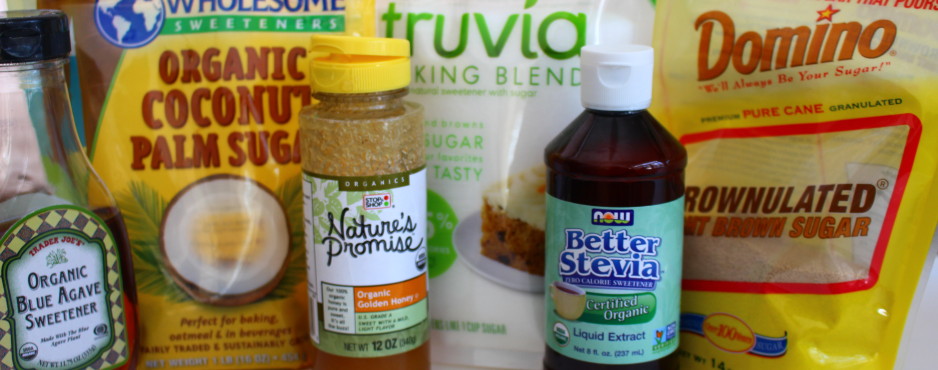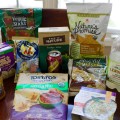I think by now we all realize that sugar is something to be avoided, but do we really know why? In table sugar, glucose is the portion that is used by our cells for energy. The best sources of this are starchy vegetables.
Fructose on the other hand is the portion that we need to try to avoid. Fructose cannot be used for energy by our cells, the liver must process it and get rid of it for us by sending it out as fat to our fat cells, this can damage the liver and lead to insulin resistance. Fructose also causes leptin resistance which is the hormone that controls our appetite and metabolism. Once this hormone becomes resistant it is much easier to gain fat. Cancer cells also thrive on energy from fructose. If you were wondering about fruit, “fructose in fruit is encased in fiber-rich flesh that reduces the absorption in the body and its metabolism in in the liver serving as a sort of antidote to the negative effects of fruit metabolism” see here for the full article. Don’t forget, fruit juice does not have the skin and fiber that real fruit does. The fructose concentration in Minute Maid 100% apple juice is 65.8% in Pepsi it is 65.7%!
Now that we know the 2 parts of table sugar lets look at what it does to our bodies when we consume it:
- Sugar is high in calories but has absolutely no nutrients
- It weakens your immune system by impairing your white blood cells
- Sugar is high in fructose (50%) which can stress your liver (high fructose corn syrup and agave syrup are even higher!)
- When too much sugar is consumed, our bodies build a resistance to insulin which can lead to type II diabetes
- Sugar effects your brain by making it think it needs more to feel full, but it will never make you feel full because it is not satiating and so you overeat
- It causes dopamine to be released in the brain which makes it highly addictive
- Sugar, not fat or cholesterol has been shown to contribute to heart disease by raising triglycerides and LDL
- Sugar needs high amounts of vitamin B to convert into energy, it basically robs your body of this very important vitamin which a lot of us are low in to begin with
- Eating sugar releases inflammatory messengers called cytokines, causing increased inflammation in your body and can contribute to arthritis pain as well as other autoimmune inflammatory diseases and cancer
- Sugar is used as energy in the form of glucose but any that is not used is stored in the liver as glycogen. Since most of us are not running marathons daily, we have plenty of stored glycogen. Once your liver is full, guess what the sugar gets stored as? Adipose fat! And our bodies have no limit on how much of that we can store…hence obesity.
Do you realize that the food industry has hijacked your taste buds, hormones and brain chemistry? It is not your fault that you are addicted to sugar. Sugar is a drug. I’m not going to go as far as saying it is as addicting as cocaine but it is very addicting. In order to detox your body you must cut it out completely at least for a period of time so that you can reset your taste buds and realize how good you can feel without its effects. (This is hard!) I highly recommend a sugar detox. There are many programs or books you can follow. Once you have reset your tastebuds, we as humans enjoy something sweet every now and then. Below I have summarized the various types of sugar and sugar substitutes and my rating. Below that is a table showing the Glycemic index, Glycemic load and % of fructose of each product for comparison:
Pure maple syrup (Not Aunt Jemimah!) It comes directly from a plant’s sap and does contain over 50 antioxidants, It is much lower in fructose than sugar (containing barely any)
Rice malt syrup-a blend of glucose and maltose. No fructose and less stress on the liver. Make sure to find an organic brand as arsenic has been found in some regular brands.
Molasses-Is basically boiled down sugar or beet cane with the sugar crystals removed. Whats left is the liquid or syrup. Molasses is much higher in many essential minerals and vitamins then processed white sugar, but it is still a byproduct of sugar. It is 25% fructose. Ok in small amounts for cooking things that need its unusual flavor.
Coconut Palm Sugar: Coconut sugar is lower at 40% fructose and does contain some fiber and nutrients but it still reacts in your body like sugar.
Raw organic sugar, evaporated cane juice – 50% fructose, 50% glucose. Don’t be fooled, your body will not recognize the difference between these and plain white table sugar. The processing may be different but it reacts in your body the same way.
Brown sugar – 50% glucose, 50% fructose. Still sugar, the tiny amount of minerals compared to white sugar does not make up for the fact that it is still sugar.
Honey: Most honey is 53% fructose, with 20-30% glucose and the rest water. In its raw form it has quite a few health benefits. The problem is it still acts like sugar in your body and when it is cooked or added to tea the nutritional benefits that you may be getting are killed off and in reality most of us are buying processed honey which has no additional benefits at all.
High fructose corn syrup: 55% fructose. Higher than sugar and the form of free fructose in it according to Dr. Mark Hyman requires more energy to be absorbed by the gut and it soaks up two phosphorous molecules from out bodies ATP (bodies energy source). This in turn depletes the energy fuel source in our gut required to maintain the integrity of the intestinal lining. Ever here of leaky gut? High doses of this product can actually punch holes in the lining allowing particles to escape into our blood stream causing inflammation which is the root of most disease. I personally will not buy a product if it contains this ingredient.
Agave Syrup: Agave was very popular for awhile as it has a lower effect on blood sugar levels than sugar, which is good for diabetics. But it is highly processed and is usually 80% fructose which can really stress your liver and is metabolized to fat more rapidly than any other sugar.
Sugar alcohols: xylitol, sorbitol, maltitol, erythritol. These are less calories and are not completely absorbed in your small intestine hence having less of an effect on your blood sugar levels but can cause bloating, diarrhea and gas in some people. The non-GMO fermented form of erythritol has been found to be the best of these but usually in products you do not find it that way.
Sucralose, Aspartame and Saccharin- not considered natural, I personally avoid like the plague but that is for another article…
Monk Fruit sweetener- is made from the extract of the luo han guo fruit and erythritol. The best form I’ve seen of this is Lankanto sold by Donna Gates here. Her form of erythritol is fermented and non-GMO. It bakes exactly like sugar but is quite expensive. Contains no fructose.
Stevia: Stevia is an herb derived from the stevia plant. Stevia in its pure liquid form is my choice of sweetener. It contains no fructose. It has been used for centuries and has no effect on blood sugar levels. It was once touted as a natural appetite suppresent. I have not found one study to deter me from using it and have for over 10 years. Some people tell me it has an aftertaste but I have found that the NOW brand liquid stevia which you can order on Amazon here or find in some stores has no aftertaste at all. I put in my coffee and bake with it. 1 tsp of liquid stevia = 1 cup of sugar. In baking you need to make up the bulk with something like applesauce. Truvia and other powdered forms are processed, bleached and have GMO erythritol. I use in baking occasionally if I can’t make the liquid work.
Remember when detoxing from sugar it is best to avoid all of the above as anything sweet signals your brain that something sweet is coming and makes it harder to stick with the plan. Once you have your sugar intake reduced you can add in small amounts of natural forms if you think you can eat them in moderation.
Bottom line: my top choices are pure liquid stevia and Lankanto (or Monk fruit sweetener)
next best: raw honey, Pure maple syrup, organic rice malt syrup organic coconut sugar, molasses and sugar alcohols (if you can tolerate them)
avoid: sugar, processed honey, cane sugar, high-fructose corn syrup, agave syrup, brown sugar and all artificial sweeteners
| Source | Glycemic Index | Carbs in 2 TBSP | Glycemic Load | % of Fructose |
|---|---|---|---|---|
| Stevia | 0 | 6 | 0 | 0 |
| Monk Fruit Sweetener | 0 | 4 | 0 | 0 |
| Erythritol - sugar alcohol | 1 | 32 | 0 | 0 |
| Xylitol -sugar alcohol | 12 | 16 | 2 | 0 |
| Maltitol - sugar alcohol | 35 | 16 | 6 | 0 |
| Maple Syrup | 54 | 26 | 14 | 0 |
| Rice Malt Syrup | 25 | 32 | 8 | 0 |
| Molasses | 55 | 30 | 17 | 25 |
| Coconut Palm Sugar | 35 | 20 | 7 | 40 |
| Table Sugar | 65 | 32 | 21 | 50 |
| Brown Sugar | 65 | 32 | 21 | 50 |
| Evaporated Cane Juice | 43 | 32 | 14 | 50 |
| Honey | 50 | 34 | 17 | 53 |
| High Fructose Corn Syrup | 58 | 30 | 17 | 55 |
| Agave Syrup | 15 | 32 | 5 | 80 |
70 or > = high
56-69 = moderate
0-55 = low
Glycemic load - How much a food will raise a persons blood glucose after consuming
Glycemic index * carb grams/100 = Glycemic load
20 or > = high
11-19 = medium
10 or < = low

